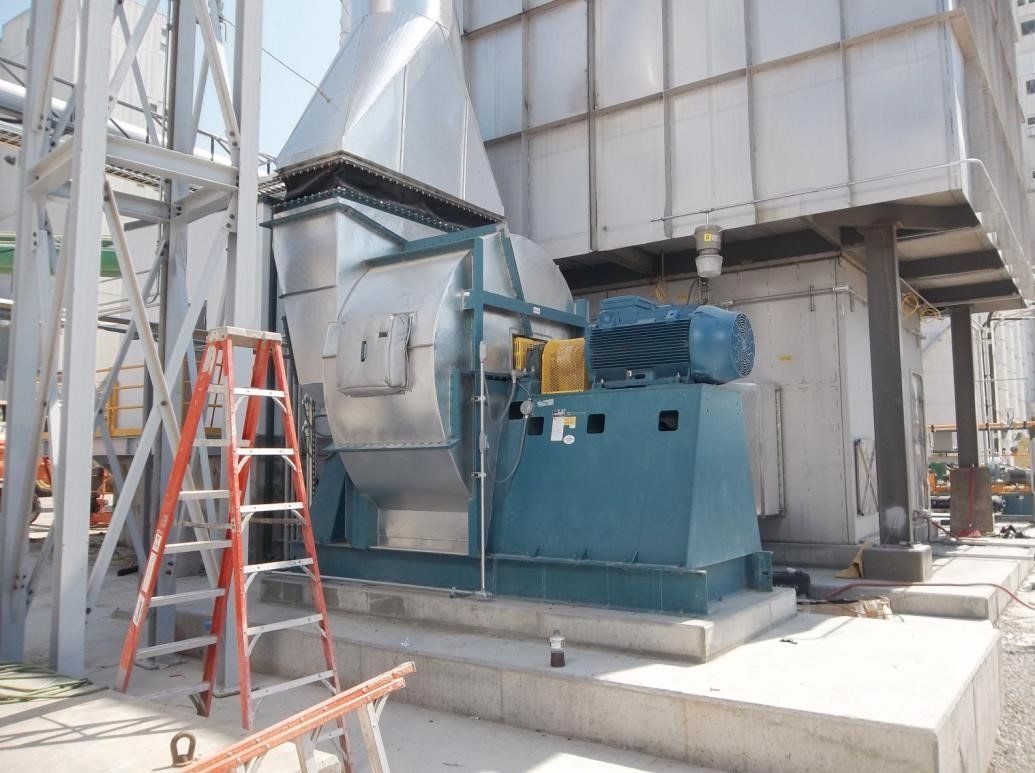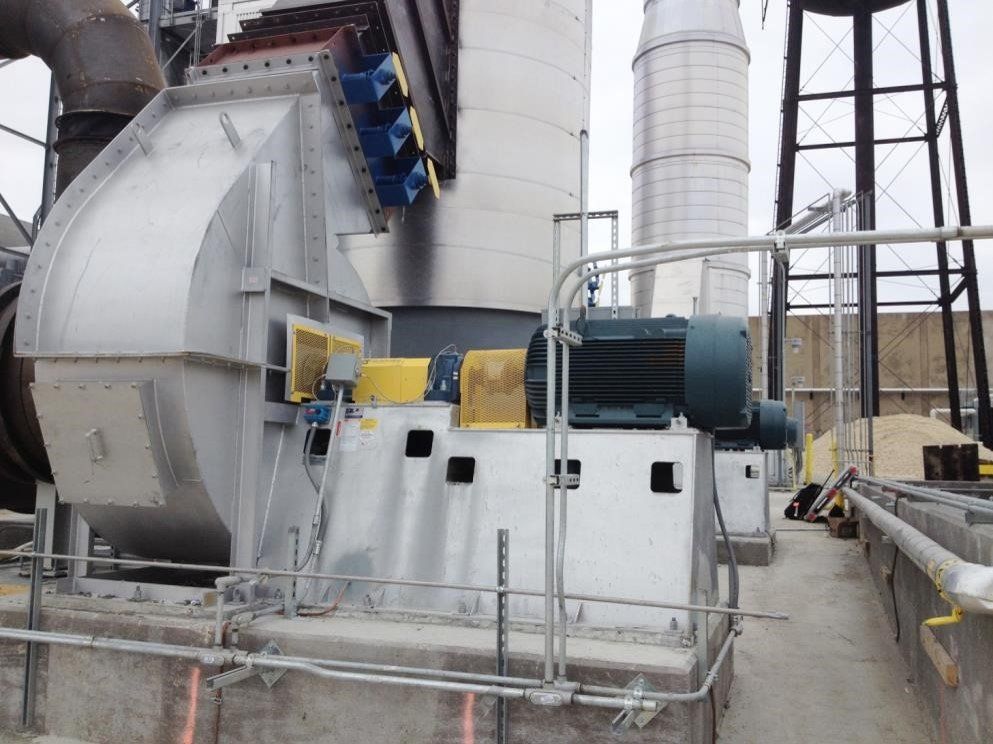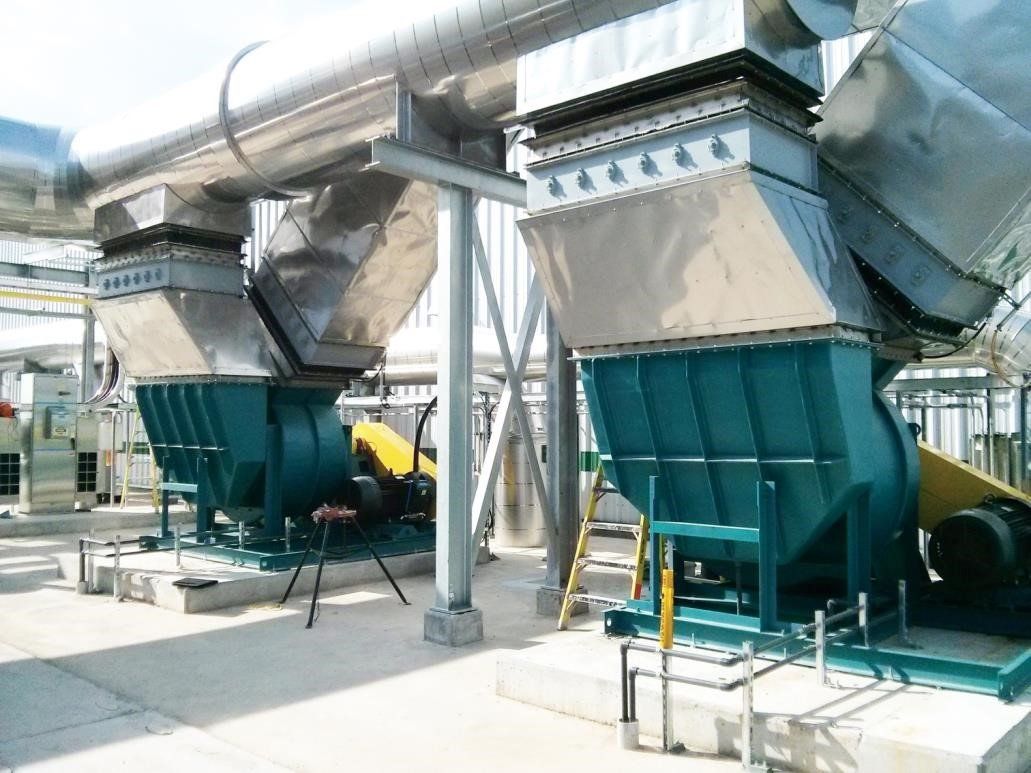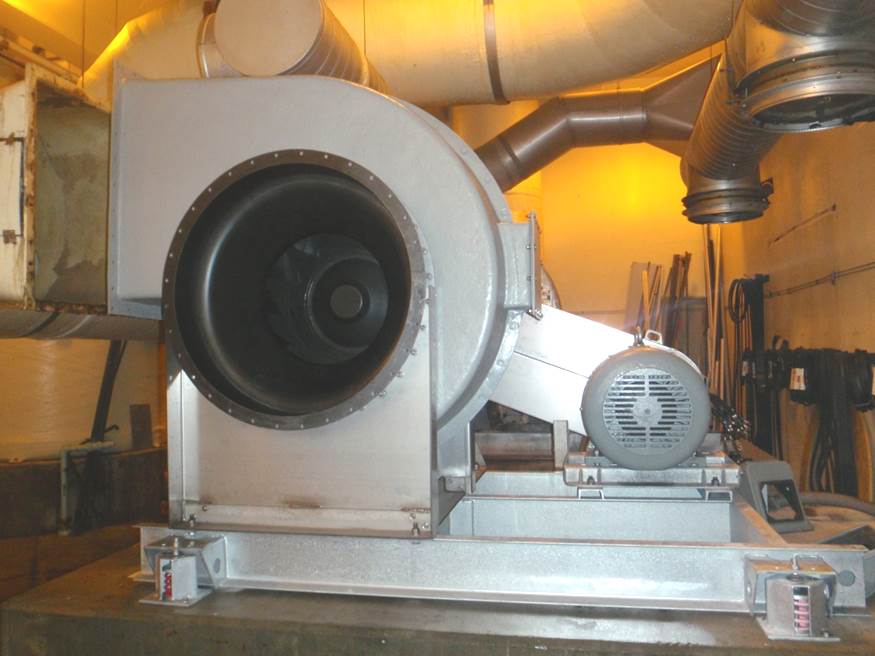Air Handling System Turns Hangar into Paint Spray Booth
Overview
Interjet Airlines is one of Mexico’s first regular low-cost airlines. The company operates from its headquarters at Mexico City International Airport and from Toluca International Airport.
The airline was founded in 2005, but despite its youth, Interjet is quite progressive. In 2007, it began development of its 864,000-square-foot Aircraft Maintenance and Repair Center at the Toluca Airport. This maintenance facility offers major repair and painting services for large aircraft.
Working through its Mexico City-based engineering firm, DIIN Ingenieria, Interjet set out to build its maintenance facility from scratch. And when it came to ventilating the area where large aircraft would be painted, DIIN Ingenieria selected Aerovent representative Fred P. Heinzmann Co. of Houston, Texas to supply the air handling system. DIIN Ingenieria worked closely with Fred P. Heinzmann’s outside sales engineer, Andy Freeman. “We received a bid invitation from Interjet’s engineering firm,” said Freeman. “The airline wanted to build a new hangar to spray paint its own planes as well as planes from other airlines. They wanted to make a large hangar the spray booth—the whole hangar.”
Challenge
Stand-alone paint booths can be purchased. However, Interjet wanted its new paint booth to be comprised of an entire hangar bay with the ability to prevent overspray and fugitive pollutant emissions while maintaining close proximity to its maintenance shop.
For its painting hangar, Interjet wanted custom air handling units with a small footprint, quiet fan package, good filtration, and low velocity filtered supply air with laminar flow. “They wanted small, quiet, dependable, fairly priced units that could run every day,” Freeman said.
Laminar airflow was important to the success of this project. “Interjet wanted straight-line airflow,” said Freeman. “They didn’t want the air swirling as it came out of the duct because that could lead to overspray.”
Interjet also wanted the capability to scrub the air before it left the building. This meant that the paint hangar’s exhaust air needed to filter out particulates and paint and/or solvent-based hydrocarbon compounds. To accomplish this, Aerovent engineers had to design a high-volume, low-velocity air handling unit with inline filtration capable of maintaining lightly positive pressure within the painting hangar and less than a 1-inch differential across the filters. In addition to these specifications, Interjet also required its new facility to comply with U.S. codes and standards for this type of facility.
Solution
Fred P. Heinzmann Company supplied a custom-designed air handling system including three centrifugal Filtered Air Supply units, three centrifugal Filtered Air Exhaust units, system controls, VFDs, and the interface that drives the system, all from Aerovent. The Aerovent design team worked with Interjet and DIIN Ingenieria to design the entire air handling system.
On one side of the hangar, three Air Supply units pull in outside airthrough filters that remove airborne particulates, such as dirt, dust, and pollen. Each of these double width, double inlet, VFD controlled 44.5-inch centrifugal blowers run at a top speed of 657 RPM to produce 44,000 CFM at 1-inch of pressure for a total of 132,000 CFM of supply side air. Fabric duct socks connected to a common supply plenum disperse the air from the top of the hangar. The air travels toward the floor, picking up paint spray along the way.
On the other side of the hangar, three Air Exhaust units pull air through grate-covered ducts located in the floor. The air passes through a series of filters disposable pre-filters that capture paint and particulates and two stages of carbon filters that remove hydrocarbons—through the centrifugal blowers, and is discharged to the outside. Each of these single width, single inlet, VFD controlled 55-inch diameter centrifugal blowers run at a top speed of 720 RPM to pull 44,000 CFM for a total of 132,000 CFM of exhaust side air.
With the supply and exhaust units operating as a cohesive system to provide ceiling-to-floor laminar airflow, the VFDs for both supply and exhaust units are adjusted to maintain a slightly positive pressure (less than 0.1 inch W.C.) within the hangar. “If there’s too much positive pressure, it will force the dirty, contaminated air to the outside before it is adequately filtered,” said Freeman. “There needs to be a certain differential across the filters for them to be effective.”
Maintaining the ideal pressure inside the hangar is challenging because of the large door where aircraft enter and exit. Therefore, the door must remain closed while planes are being painted. “The system handles 132,000 CFM on the supply side and 132,000 CFM on the exhaust side,” Freeman said. “It’s almost neutral, pressure-wise. We created an envelope of fresh filtered air around the plane.”
A quiet system with a small footprint was also important to Interjet. “These units were engineered to run at lower speeds for quiet operation and used belt-driven blower to make the fan package as compact as possible,” Freeman said.
Interjet personnel set the speed of the fans. In addition to temperature and humidity conditions, the pressure differential across the filter system is closely monitored. When this pressure exceeds 1 inch, an alarm indicates that a filter change is necessary. “When the filters are new and clean, the blowers can operate at lower speeds because there’s less resistance to the airflow,” said Freeman. “But as the filters load up, fan speeds need to be increased to recover the pressure lost across the dirty filters.”
Results & Benefits
Aerovent supplied the custom air handling equipment, supporting system components, and the engineering expertise to create Interjet’s air handling system. However, the fan company’s involvement in this project transcends merely manufacturing and supplying equipment. Not only did Aerovent design Interjet’s entire paint hangar air handling system, the company overcame challenges to do so. While the original request for bid specified extremely unique requirements, Aerovent worked with Interjet to overcome these challenges and meet their exact needs.
“Interjet needed a custom-designed air handling system,” Freeman said. “We feel we were successful on this project. We were able to meet Interjet’s noise/sound criteria as well as to maintain a small system footprint. The fact that the system efficiency is high is an added bonus..”
According to Freeman, Interjet was extremely happy during the bidding stage, the building process, and is “extremely happy with the final product because it performs very well and exceeds expectations.” he said. “Aerovent has been building custom air handling units for many, many years,” said Freeman. “I consider Aerovent to be an authority in the fan industry.
And that translates to satisfied customers in any language.











